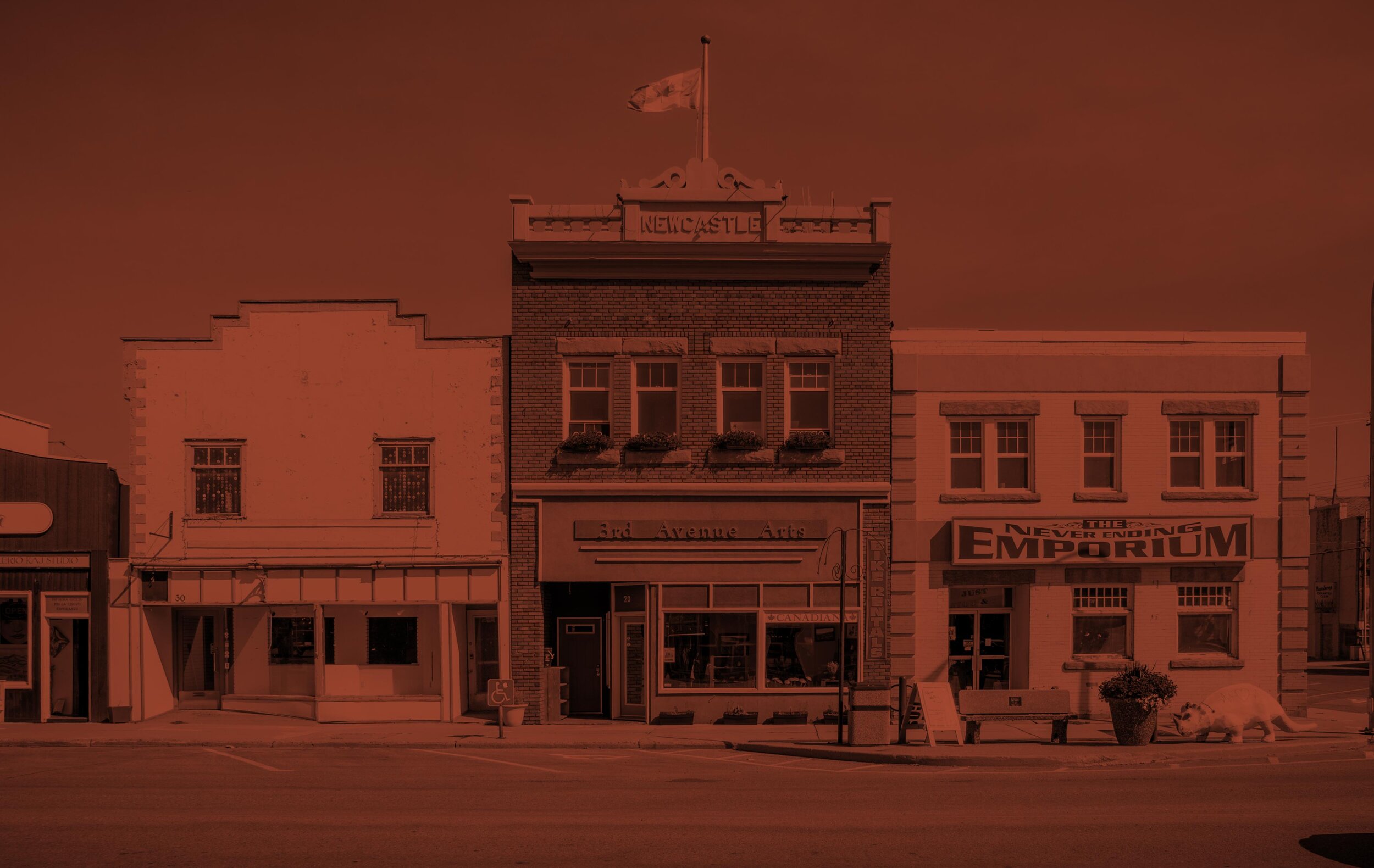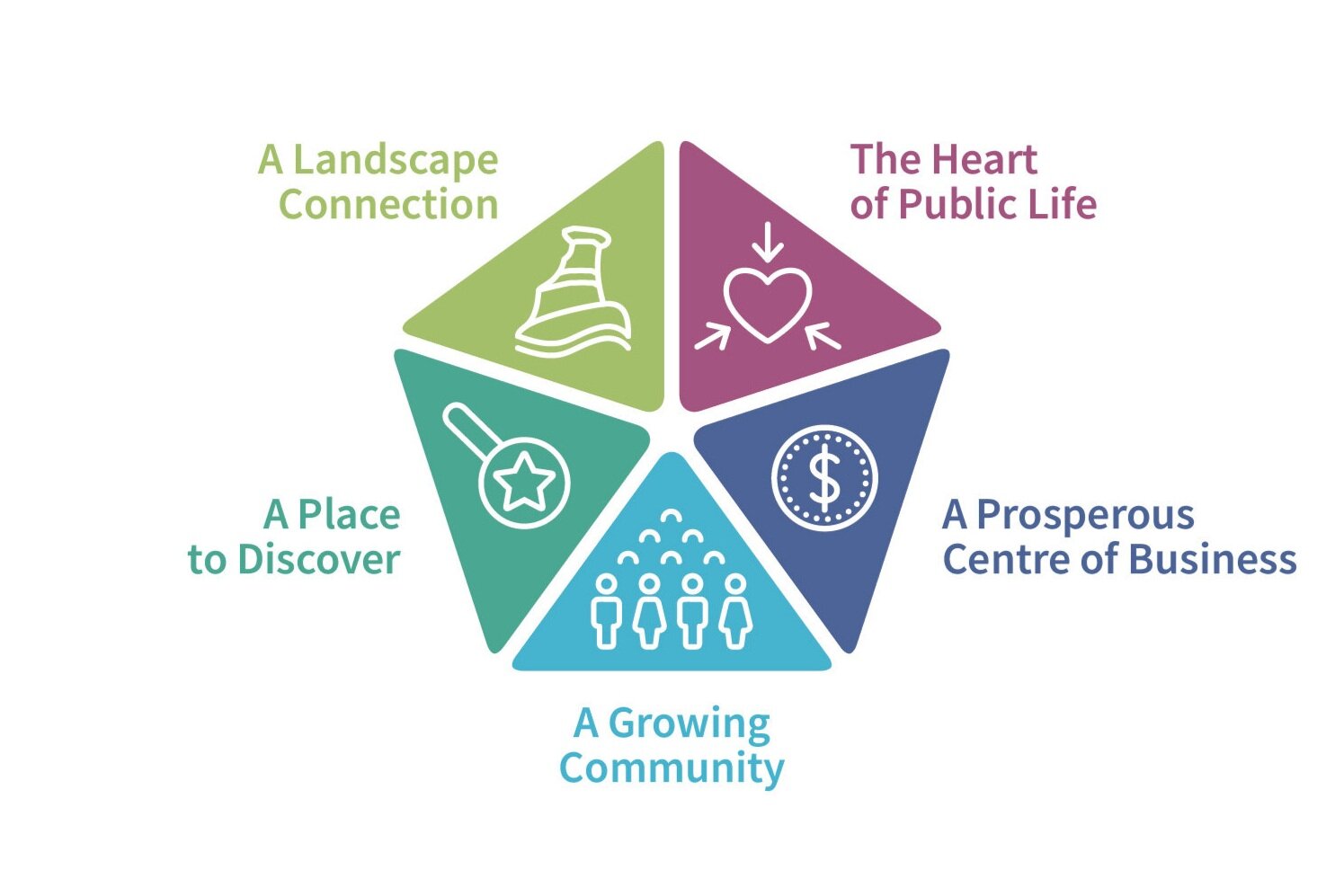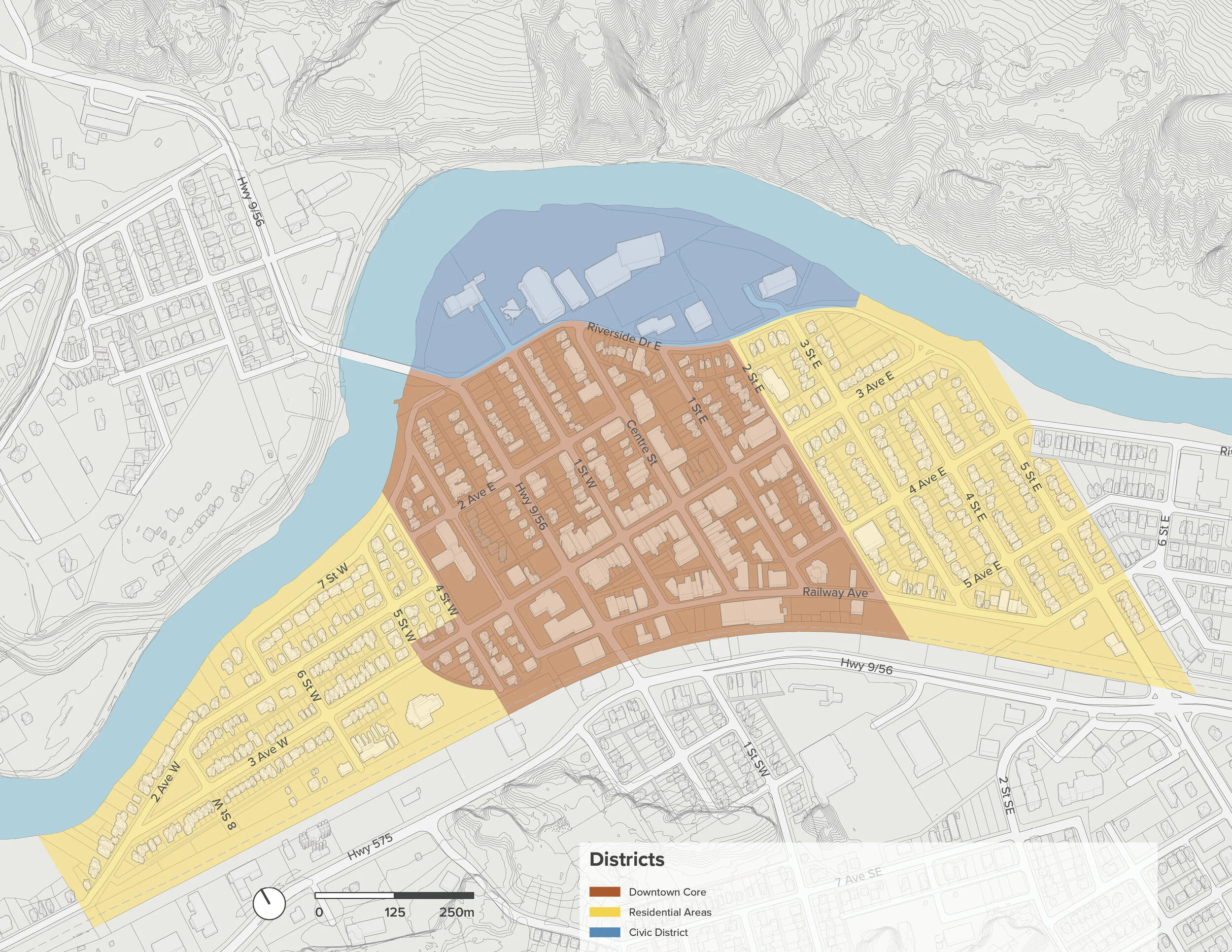
Plan Overview
The Downtown Area Revitalization Plan (DARP) aims to harness existing momentum and revitalization efforts into a new vision and coordinated strategy for Downtown. The plan will serve as a 15-year road map, setting out a framework of policies and actions that will enable Downtown to live up to its full potential as a thriving and self-sustaining place and the heart of all activity in the Drumheller Valley.
The DARP is made up of six chapters, which are summarized below.
Chapter 1: Introduction
This chapter outlines the plan’s purpose and authority. It identifies the plan area and how the plan fits with the rest of Drumheller’s planning tools and documents. The DARP is a statutory plan, meaning that the plan must be approved by bylaw and undergo a public hearing process to be adopted. The plan must also be consistent with the Town’s Municipal Development Plan, the overall plan for future growth and development in Drumheller.
Chapter 2: Vision
This chapter sets out a new vision for Downtown Drumheller.
VISION: Downtown Drumheller will capitalize on the magnetism of the Drumheller Valley.
• affirming its role as the heart of public life;
• becoming an unmissable part of the visitor experience;
• hosting diverse and thriving businesses;
• supporting a growing community of residents
• and connecting people to the river and badlands landscape.
This vision is based around the five pillars, which were created from feedback and background analysis in the initial stages of the project. Within each pillar are a series of goals. These goals provide more detailed direction on how to achieve the plan’s vision.
Chapter 2 also discusses the overall spatial concept for downtown. The spatial concept describes how downtown will function as a place in the future, identifying ‘nodes’ or places to concentrate activities, pathways to connect between key destinations, and landmarks that signal you have arrived in Downtown.
The five pillars of the Downtown Area Revitalization Plan
Chapter 3: Policies
This chapter supports the vision and concept through policy in three categories: mobility, public space, and land use.
Mobility policies apply to streets and pathways in Downtown. The section establishes a hierarchy of streets and directs how each should be treated according to their purpose and function. For example, “Main Streets” serve as a key destination for pedestrians and should provide wider sidewalks and more amenities to encourage people to linger.
DARP Mobility Concept
Public Space policies apply to parks and plazas in Downtown. The section identifies existing and proposed future civic parks, neighbourhood parks, pocket parks, and plazas and how these should function. It also directs how all public spaces should be designed to be safe, inclusive, and vibrant in all seasons.
DARP Public Space Concept
Land Use policies apply to all future public and private development in Downtown. This section divides downtown into three distinct land use areas: Downtown Core, Civic and Recreation Precinct, and Downtown Neighbourhoods. The areas each have their own functions and associated policies. For example, the policies ensure that Downtown Neighbourhoods will continue to be primarily neighbourhood residential areas, while the Downtown Core will be a mixed-use destination with ‘active uses’ (such as restaurants and retail) on the ground floor, and less active uses (such as residential or office) above or behind.
DARP Land Use Concept
Chapter 4: Places
This chapter identifies 10 key Places in Downtown that could be created or updated to invite people and activity to Downtown. These include road and trail connections as well as public places (parks and plazas). Initial suggestions for how these Places could function are provided.
DARP Places
Chapter 5: Actions
Chapter 5 provides a library of actions and initiatives to achieve the plan’s vision and goals. These actions were inspired and vetted by the community through public and stakeholder engagement. The actions are broken down into four categories:
Upgrades: physical built improvements to public realm, infrastructure, and buildings.
Incentives: mechanisms or grants that encourage particular types of development or outcomes.
Activities: programs or events that are intended to bring life to downtown and its public spaces
Supports: tools to enable the Town to facilitate all other actions, such as staff and communications tools.
Chapter 6: Implementation
This final chapter sets out the strategy for implementing the actions of the plan. Implementation is broken into three phases, into which all of the actions have been organized:
Short Term (0-5 years): Make it visible.
Test new ideas on the ground and showcase change.
Medium Term (5-10 years): Keep it going.
Sustain momentum and solidify success.
Long Term (10-15 years): Go big.
Reinforce investment through large scale projects and partnerships.
To ensure the plan remains current and can adapt to new information and opportunities, a future project scoresheet is provided which gives the Town criteria to assess new projects against the goals of the DARP.






